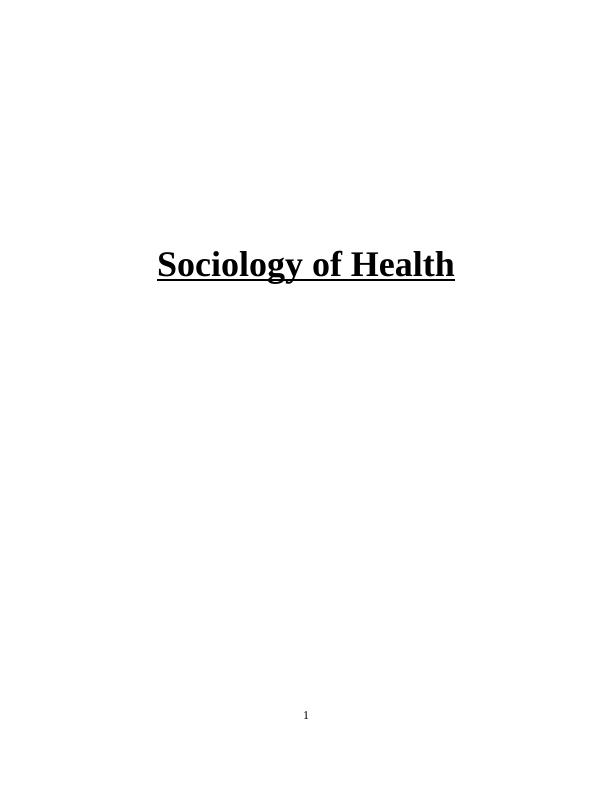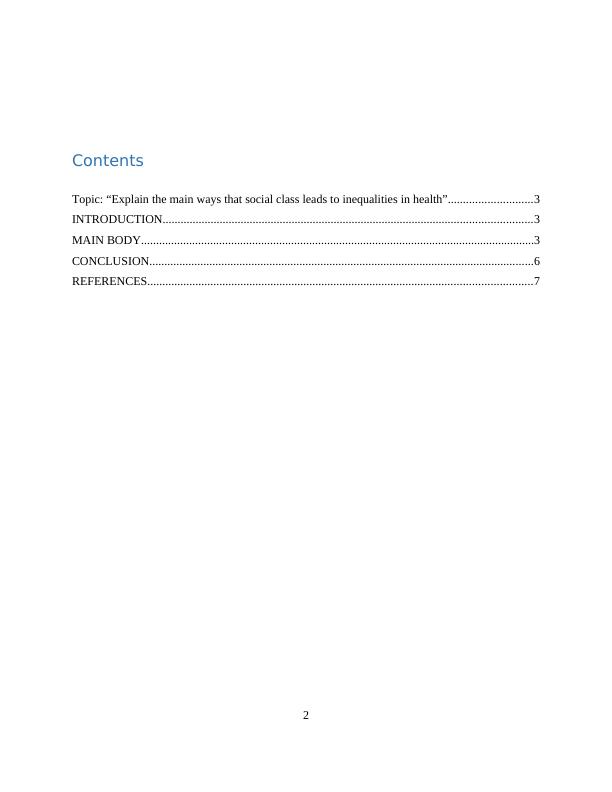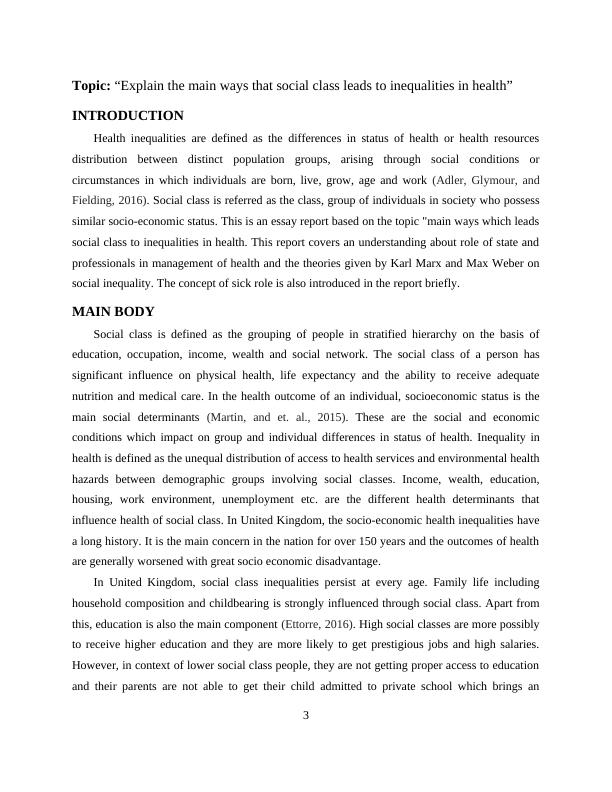Explaining Social Class Inequalities in Health
Added on 2023-01-06
7 Pages2131 Words31 Views
End of preview
Want to access all the pages? Upload your documents or become a member.
An Introduction to Health and Social Care
|8
|1909
|196
Explain the main ways that social class leads to inequalities in health
|7
|1934
|57
Health Inequality and Ethnicity
|11
|2512
|158
Impact of Socio-Economic Class on Health
|7
|2195
|59
Impact of Socio-Economic Status on Health: UK Perspective
|7
|2096
|40
Sociological Understanding for Improving Education in Australia
|15
|4212
|92



